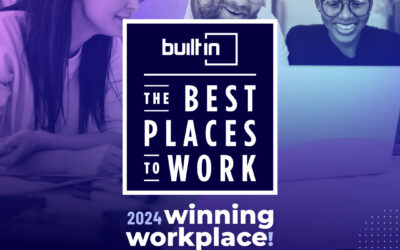25
March 2021
Rob Rutledge
Do you know how to improve your call center customer service – or if you even need to? Customer expectations have changed dramatically in the last decade. Your first step to improving customer service is understanding what your customers actually expect.
Expectations around customer experience have changed. There are a lot of factors that have contributed to this evolution, but the largest and most prevalent among them are the pandemic and always-on retailers like Amazon. Consumers now expect responses 24-7, proactive communications that anticipate their needs and questions, sometimes before they have them.
Many businesses may not realize until it’s too late that they’re not meeting customer expectations. Some won’t even realize or rationalize with themselves that these new rules of customer engagement don’t apply to them. Surprisingly, the increased expectations apply, even for business outside traditional retail. The “Amazon Effect” has impacted most businesses today, from banks to insurance companies, from utilities to specialty boutiques.
If you’re a business stakeholder, you may have a sense that your contact center isn’t quite delivering the experience that your customers desire. If you’re getting a lot more calls than usual – or many fewer calls – it may be a sign that something isn’t working.
How have consumer expectations changed?
A decade ago, it probably would have been sufficient to have an 800-number and an email address for customer support. Brick-and-mortar businesses that closed at 5:00 PM were not expected to respond to any inquiries that came in after business hours. Business set the bar at “being reachable” and “reasonably responsive.” Consumers were satisfied with two-week delivery times and 24-hour wait for an email in response to their concerns. A broken or ill-fitting item could be returned in-store or mailed back for refund or exchange.
Today, those expectations have been turned upside-down, and the rules apply to nearly every industry. Consumers and business buyers alike expect to be able to reach your company via mobile, web, or phone all day, every day. If you don’t have a plan in place to respond, you’re probably losing business – and letting down your current customers.
When customers do reach out, they expect immediate responses, next-day shipping (for free), and fast and hassle-free returns (for free). They also expect to speak to a person when they call without having to go through five minutes of repetitive voice prompts. In fact, customers are beginning to expect you to recognize them by their phone number or voice, and know – or at least have some idea – why they’re calling and how they have been trying to interact with you. The customer who purchased a laptop online six days ago and has been browsing your FAQs about laptop issues is probably calling with a question or complaint about that purchase, and your team should have the data to see that.
Beyond that, customers expect you to be proactive and personalized in your outreach to them. If cable service is down in a particular region, customers in that region expect you to notify them of the outage before they discover it themselves, and they’ll also want you to tell them when service will resume in their neighborhood. By the same token, a customer who buys the same accounting software year after year will want to be the first to know about the upcoming release of a new version, as well as any discounts available to early adopters – and they’re probably less interested in the unrelated software you’ve been emailing them about.
Now you know: Customers expect a lot. Are you meeting expectations?
So, do you know how to improve your call center customer service? The first step to understanding whether your customer contact center is meeting expectations is to understand those expectations. Does your business have an explicitly defined customer experience? In other words, do you know who your customers are, what they’re looking for, and what your contact center needs to deliver that experience?
You probably have more than one kind of customer, and therefore more than one experience; ideally, you’ll have one for each segment. These segments may be based on a product or service, or they could be based on demographics – or a combination of both. For example, older customers may prefer to pick up the phone and call your business. Younger shoppers may reach for a mobile device and want to chat first. Customers who tend to make bigger or more frequent purchases may merit a very different experience than new customers who are shopping for lower-priced items. Every business defines what those experiences will look like, but it usually needs to start by figuring out the journey for each segment.
Every customer has a journey, and it’s defined by the various touchpoints with which they interact on their path to purchase. Once they become your customer, the path continues as you endeavor to make them lifelong, happy customers. It starts on the day they discover your business and just keeps going.
As a business, you’ll want to understand these journeys and build explicitly defined customer experiences to meet them. Then, you’ll want to make sure your contact center understands these journeys and is aligned to them, so that they can proactively create meaningful, positive interactions with your customers.
It’s a step many businesses today haven’t taken the time to take. To be fair, this evolution in customer expectations has happened so quickly and completely; many haven’t realized that they need to evolve – they literally “don’t know what they don’t know.”
Knowing what you know, what changes are you prepared to make? Do you think you know how to improve your customer call center service to meet today’s high standards? Contact us to learn how we can help.
Similar Blogs
Built In Honors Eventus in Its Esteemed 2024 Best Places To Work Awards
Denver, CO // January 9, 2024 —Built In today announced that Eventus was honored in its 2024 Best Places To Work Awards. Specifically, Eventus earned a place on Best Midsized Places to Work in Colorado in Denver. The annual awards program includes companies of all sizes, from startups to those in the enterprise, and honors both remote-first employers as well as companies in large tech markets across the U.S.
Eventus Solutions Group, a Tech Mahindra Portfolio company, Launches Navixus™
Eventus, a leading provider of digital transformation, consulting, and business re-engineering solutions, has announced today the launch of a new business unit Navixus™, within Tech Mahindra Business Process Services (BPS). Navixus™ will combine Tech Mahindra’s Business Process Services’ automation, analytics, and consulting with Eventus’ customer experience (CX) and transformation capabilities to offer a holistic digital transformation suite to customers.


